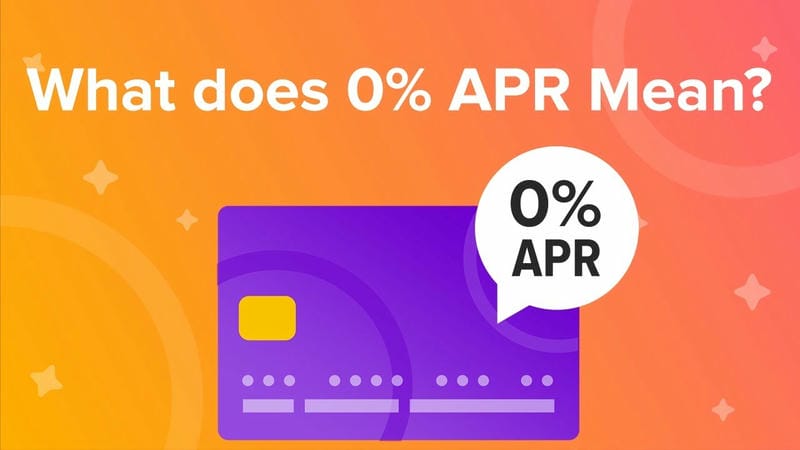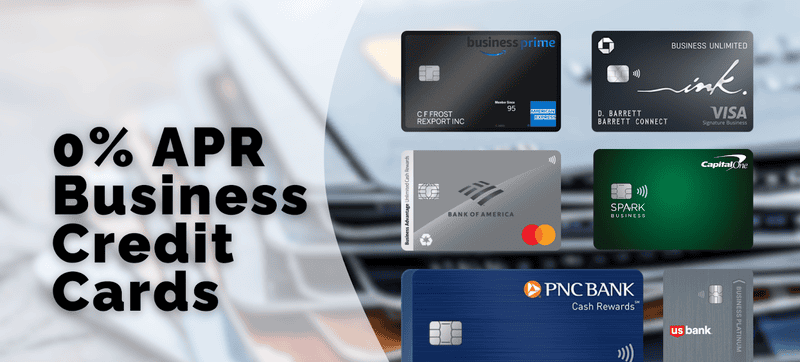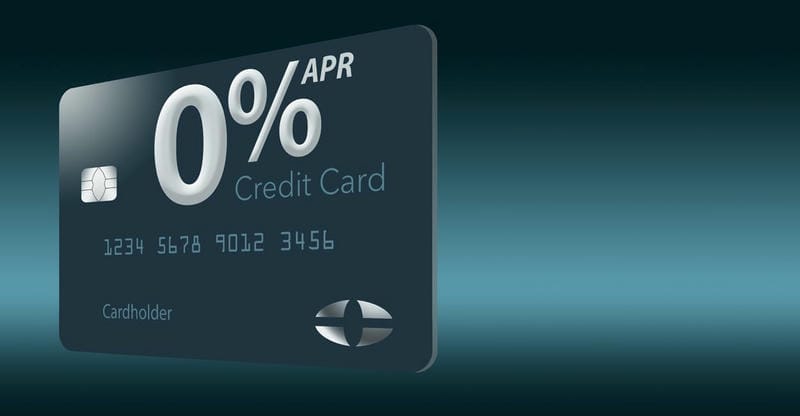Looking for a way to manage your finances while avoiding high-interest rates? Zero interest credit cards might be the perfect solution for you. These cards offer an introductory period with 0% APR, allowing you to make purchases or transfer balances without paying interest for a set duration. Whether you’re planning a large purchase or consolidating debt, zero interest credit cards can help you stay in control of your budget. This article, compiled by LifeMySavings, provides the latest insights and essential details to help you choose the best zero interest credit card for your needs.
Top best zero interest credit cards
Capital One Quicksilver Cash Rewards Credit Card
The Capital One Quicksilver Cash Rewards Credit Card is a solid choice for those who want straightforward rewards with a 0% intro APR on purchases for the first 15 months. After that, the variable APR will apply. Plus, you’ll earn unlimited 1.5% cash back on every purchase. This card is perfect for everyday use, and the absence of an annual fee is a nice bonus. Whether you’re buying a big-ticket item or just running your daily errands, this card offers great value with no hassle.
Capital One Savor Cash Rewards Credit Card
For those who love dining out, the Capital One Savor Cash Rewards Credit Card is an excellent pick. It offers 0% intro APR on purchases for the first 15 months, which is ideal for large purchases or spreading out restaurant bills over time. After the introductory period, the APR ranges from 19.74% to 29.74% variable. You’ll earn 4% cash back on dining and entertainment, 2% at grocery stores, and 1% on all other purchases. While the annual fee is $95, the rewards you earn can quickly outweigh that cost, especially for foodies.
Citi Double Cash® Card
The Citi Double Cash® Card combines a strong cashback program with a long zero interest credit card period of 18 months on balance transfers. After the intro period, a variable APR of 19.24% – 29.24% applies. It gives you 2% cash back on every purchase—1% when you buy and another 1% when you pay your bill. This makes it a great option for those who want a no-fuss card with a simple rewards structure and a generous balance transfer period.
Capital One VentureOne Rewards Credit Card
For frequent travelers, the Capital One VentureOne Rewards Credit Card stands out as a top choice. It offers 0% intro APR on purchases for the first 12 months, followed by a variable APR ranging from 19.74% to 29.74%. You’ll earn 1.25 miles per dollar on every purchase, and miles can be redeemed for travel expenses like flights, hotel stays, and car rentals. There’s no annual fee, and the 0% APR on purchases makes it easier to manage big travel-related expenses without the pressure of interest.
Blue Cash Preferred® Card from American Express
The Blue Cash Preferred® Card from American Express is a solid pick for those who want to earn cashback rewards and enjoy a 0% intro APR on purchases for the first 12 months. After the introductory period, a variable APR of 18.74% to 29.74% applies. You’ll earn 6% cash back at U.S. supermarkets (on up to $6,000 per year, then 1%), 6% on select U.S. streaming subscriptions, 3% on transit and U.S. gas stations, and 1% on other purchases. The $95 annual fee can be easily justified with the high rewards rates, especially if you’re a frequent grocery shopper or streaming service user.
What Are Interest-Free Credit Cards?
Interest-free credit cards allow you to borrow money without paying interest for a set period. There are several types:
- Purchase Credit Cards: Ideal for spreading the cost of big purchases like furniture.
- Balance Transfer Cards: Help save money by transferring existing debt to a card with zero interest credit cards.
- Money Transfer Cards: Let you transfer cash directly into your bank account without paying interest.
Use a comparison tool like Experian to find the best deals, but remember, they’re a broker, not a lender. These cards can help manage spending and debt, but be sure to pay off the balance before the 0% period ends.

How Do 0% Purchase Credit Cards Work?
Zero interest credit cards let you make purchases without paying interest for a set introductory period, typically between three and 18 months. During this time, you only need to make the minimum monthly payments. However, once the intro period ends, regular interest rates apply to any remaining balance.
To make the most of this card, try to pay off your balance before the interest-free period expires. Otherwise, you’ll incur interest on the leftover amount. Be sure to avoid missing payments or exceeding your credit limit, as this could cause you to lose the 0% APR offer.
What Should I Consider Before Getting an Interest-Free Credit Card?
While a 0% interest rate might sound like an easy win, it’s essential to weigh the pros and cons before applying. Here are some key things to consider:
- Fees May Apply: Some cards charge setup fees or balance transfer fees. When comparing offers, make sure to factor in these additional costs.
- Monthly Payments Are Required: Even with 0% interest, you’ll still need to make the minimum monthly payments. Be sure you can afford to repay what you borrow before applying.

- Risk of Losing the 0% Period: If you miss a payment or exceed your credit limit, the lender may cancel your 0% interest offer early.
- High Interest After the 0% Period: When the interest-free period ends, any remaining balance may incur a high-interest rate. To avoid this, try to pay off your balance before the introductory period expires. If you can’t, interest charges will quickly accumulate, even if you don’t make new purchases.
- Impact on Your Credit Score: While taking out a credit card can cause a temporary dip in your credit score, responsible use—like making timely payments—can boost it. However, missing payments or carrying a large balance can hurt your score.
How Long Do Interest-Free Credit Cards Last?
The 0% interest period on your credit card won’t last forever. Once it ends, you’ll typically be charged a higher interest rate. So, how long do you have? It varies depending on the card. Some cards offer a 0% interest period for as little as three to six months, while others may last up to 30 months or even longer. If you have a Good or Excellent Experian Credit Score, you’re more likely to be offered a longer interest-free period.
Can You Transfer to a 0% Interest Credit Card?
It’s unlikely that you’ll be offered a 0% interest period on a card you already have. Lenders typically reserve these offers for new customers or for existing customers applying for a new card. However, it may be worth considering switching your credit card to take advantage of a better deal and potentially save money on interest.
Who Should Use Interest-Free Credit Cards?
Interest-free credit cards are typically available to individuals with a high credit score. Lenders see a high score as a sign that you’re likely to pay them back on time. Because of this, they often reserve their best 0% interest offers for customers they want to attract the most. While each lender has its own criteria, a good credit score can significantly increase your chances of being approved.
If your credit score is low, you might still qualify for a 0% interest credit card, but there are a few caveats. Your interest-free period is likely to be shorter, and you may be offered a lower credit limit to help reduce the lender’s risk. However, it’s still possible to secure a deal, just be prepared for these adjustments.
How to Get a 0% Interest Credit Card
If you’re considering applying for zero interest credit cards, here are some tips to boost your chances of success:
- Shop Around: Use a comparison tool like Experian to explore the 0% interest credit card offers available in the market. It’s quick, free, and won’t affect your credit score.
- Get Your Finances in Shape: Lenders will likely assess your monthly income and expenses. Make sure you can comfortably afford the monthly payments to avoid any surprises down the road.

- Improve Your Credit Score: Even small improvements in your score can increase your chances of approval. Consider actions like registering to vote or using Experian Boost to share payment information that could help lift your score.
- Have Key Documents Ready: When applying, make sure you have important documents such as your ID, payslips, and bank statements. Having these on hand will streamline the application process.
FAQ
Which Cards Offer the Longest 0% Intro APR Period?
Currently, the longest 0% intro APR offers typically last around 21 months. However, these extended offers are becoming harder to find. Here are a few options that stand out:
- U.S. Bank Visa® Platinum Card: Offers 0% intro APR for 21 billing cycles on purchases and qualifying balance transfers. After that, a variable APR of 17.74% – 28.74% applies.
- Wells Fargo Reflect® Card: Provides 0% intro APR for 21 months on purchases and qualifying balance transfers. Balance transfers made within the first 120 days qualify for the intro rate, but a 5% fee (minimum $5) applies. The ongoing APR ranges from 17.24% to 28.99%.
- Citi® Diamond Preferred® Card: Offers 0% intro APR for 21 months on balance transfers made within the first four months. However, the 0% intro APR on purchases lasts for only 12 months. The ongoing APR is 17.49% – 28.24%.
- Citi Simplicity® Card: Features 0% intro APR for 21 months on balance transfers, but the 0% intro APR on purchases is also limited to 12 months. Ongoing APR ranges from 18.49% to 29.24%.
What Credit Score Is Needed for a 0% Intro APR Card?
To qualify for a 0% intro APR credit card, a good credit score—typically between 670 and 739—gives you a solid chance of approval. If your score is excellent (740 or higher), your approval odds improve even further, and you’ll likely be offered the best interest rates and terms. For example, you may find longer 0% intro APR offers—such as 21-month periods—available to those with higher scores.
If you’re uncertain about your approval chances, you can use tools like Bankrate’s CardMatch to estimate your odds and even discover prequalified offers, which can provide additional peace of mind before applying.
What Happens After the 0% Intro APR Period Ends?
Once your 0% intro APR offer expires, the regular interest rate will apply to any remaining balance. For instance, if you still owe $200 on your card after the intro period, that balance will start accruing interest again, and it will be reflected on your next credit card statement. It’s important to be mindful of this transition, as the interest will begin compounding on your remaining balance.
Is Deferred Interest the Same as 0% Intro APR?
No, deferred interest is not the same as a 0% intro APR credit card, and it can be much more costly. With deferred interest, the interest starts compounding immediately when you open the account, even though you aren’t charged interest upfront. If you pay off your balance in full within the specified period, the interest is forgiven. However, if you don’t pay off the balance by the end of the offer period, the interest that’s been accumulating is added to your balance. This can lead to significant charges, making deferred interest much more expensive than a standard 0% intro APR card if you’re unable to pay off the full balance in time.
In conclusion, zero interest credit cards are a valuable tool for anyone seeking to save on interest while managing their expenses effectively. From extended 0% APR periods to added perks like cashback and rewards, these cards cater to various financial goals. As shared by LifeMySavings, selecting the right card involves comparing offers, understanding terms, and ensuring timely payments to maximize benefits. Ready to take control of your finances? Explore the top zero interest credit cards today and make a smarter choice for your future.
